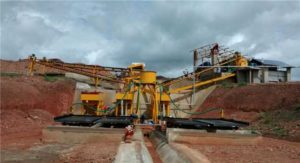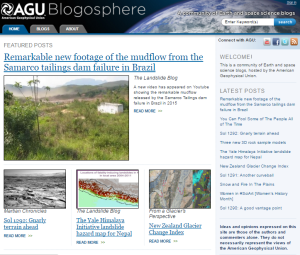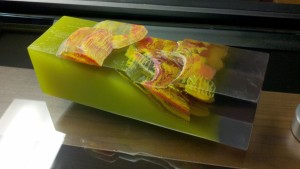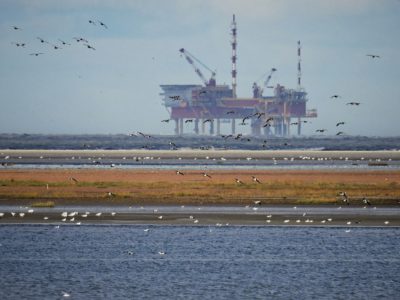
Google Earth is a great tool and it’s free for everyone to use. No doubt that many of us in the mining industry already use it regularly.
Previously I had written an article about how Google Earth can be used to give your entire engineering team a virtual site visit. It’s cheaper than flying everyone to site. That blog is available at this link “Google Earth – Keep it On Hand”.
What else can Google Earth do for me?
The Investor Relations (IR) department in a mining company can also take advantage of Google Earth’s capabilities. Typically the IR team are responsible for creating a myriad of PowerPoint investor presentations. Their slideshows will include graphics highlighting the project location, showing exploration drilling and planned site facilities for advanced projects. This is where Google Earth can be used to create a more interactive experience for investors.

Google Earth with 3D Buildings
Rather than relying only on PowerPoint, the technical team can create drillhole maps, 3D infrastructure layouts, open pit plans, 3D tailings dams, and import them into Google Earth.
By creating a KMZ file, one can share this information with investors, analysts, and stakeholders. This will provide an interactive opportunity to view the information themselves.
Viewers could fly around the site, zoom in and out as needed, examine things in 3D, and even measure distances. Viewers can even save the project in Google Earth and return back whenever curiosity dictates.
I have been a part of engineering teams where Google Earth has been used to share layout information. However I have not yet seen such information offered as a downloadable KMZ file to external parties. If you know of any companies that are currently doing this, please let me know (kjkltd@rogers.com) and I will share their link here.
There also is VRIFY
VRIFY is a new cloud based platform that provides 3D viewing capability. It provides a map based graphic tool to IR departments for sharing project information. VRIFY can also enhance collaboration among engineering teams by enabling a group to view a virtual project and sketch on the image in real time.

VRIFY desktop screenshot
VRIFY also allows more detailed information to be displayed in the form of hotspots within a project. Click on them to get more information on that topic (see image to the right).
Although I have only been given a demo of VRIFY, it appears to be a nice package that provides more functionality than Google Earth. Unfortunately VRIFY is not free for a company to use. The minimum subscription cost is about $10,000 (plus extras).
In June 2019 VRIFY made a deal with Kirkland Lake Gold whereby interested property vendors can submit their project to Kirkland Lake management for their review.
Here is the link (https://vrify.com/dealroom). In the proposed approach, the project information is submitted using the VRIFY platform. Essentially some of the same information presented in a PowerPoint is now provided in a more interactive fashion. Participating companies must first enter into a client service agreement with VRIFY. We will see how this idea works, since it does add a cost and new complexity for the property vendor.
There is another cloud based service called Reality Check, which offers virtual reality site visits.
Conclusion




 The study concluded that accessing potential deposits at depths of around 1000 m is economically feasible only if curved wells are used. The most relevant operational parameters are sufficient permeability in the ore zone and an adequate contact surface between the ore and leaching solution. The depth of the deposit is indirectly relevant, but more importantly the well installation cost per volume of deposit is critical. Hence curved wells are optimal.
The study concluded that accessing potential deposits at depths of around 1000 m is economically feasible only if curved wells are used. The most relevant operational parameters are sufficient permeability in the ore zone and an adequate contact surface between the ore and leaching solution. The depth of the deposit is indirectly relevant, but more importantly the well installation cost per volume of deposit is critical. Hence curved wells are optimal. I am also curious about the ability to finance such projects, given the caution associated with any novel technology. Many financiers prefer projects that rely on proven and conventional operating methods.
I am also curious about the ability to finance such projects, given the caution associated with any novel technology. Many financiers prefer projects that rely on proven and conventional operating methods.



 From time to time the Landslide Blog will examine mine slopes, tailings dams, and waste dump failures, however much of their information relates to natural earth or rock slopes along roads or in towns.
From time to time the Landslide Blog will examine mine slopes, tailings dams, and waste dump failures, however much of their information relates to natural earth or rock slopes along roads or in towns.

 The accepted tailings risk therefore becomes a subjective factor.
The accepted tailings risk therefore becomes a subjective factor. Environmental groups continually discuss ways of forcing regulators and mining companies to take action against the risk of tailings failure. This is commendable.
Environmental groups continually discuss ways of forcing regulators and mining companies to take action against the risk of tailings failure. This is commendable.






 One specific example that I have seen is related to the 2015 disposition of foreign resource assets by both Barrick and Ivanhoe to Zijin, a Chinese company. I don’t know much about Zijin, other than having heard Norway’s government directed its $790 billion oil fund to sell holdings in some companies because of their environmental performance. Zijin was one of these companies.
One specific example that I have seen is related to the 2015 disposition of foreign resource assets by both Barrick and Ivanhoe to Zijin, a Chinese company. I don’t know much about Zijin, other than having heard Norway’s government directed its $790 billion oil fund to sell holdings in some companies because of their environmental performance. Zijin was one of these companies. It will be interesting to see whether the idea of governments sanctioning the acceptability of acquirers in the mining industry will gain traction.
It will be interesting to see whether the idea of governments sanctioning the acceptability of acquirers in the mining industry will gain traction.